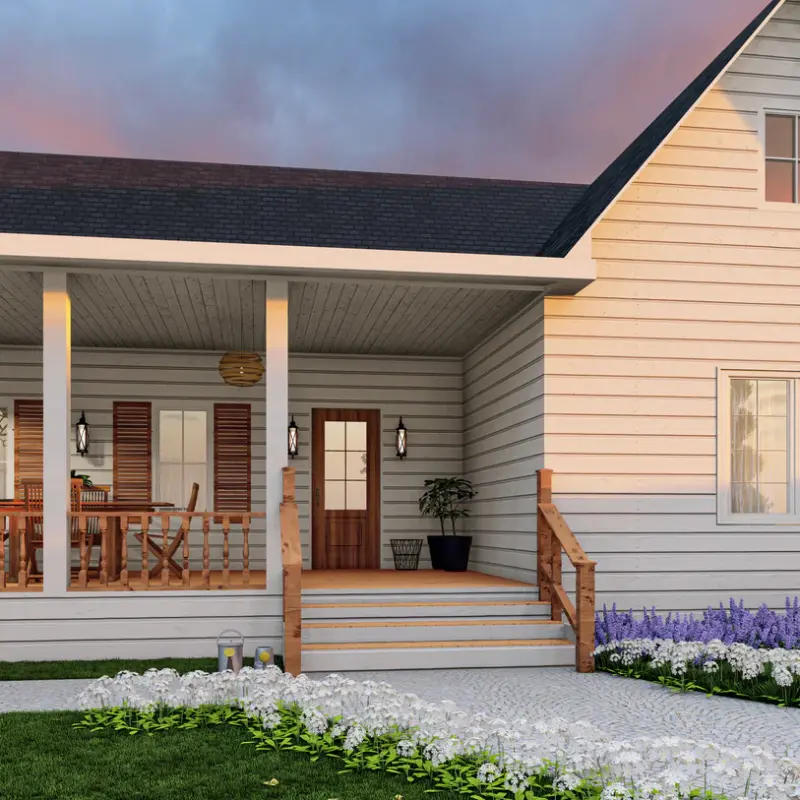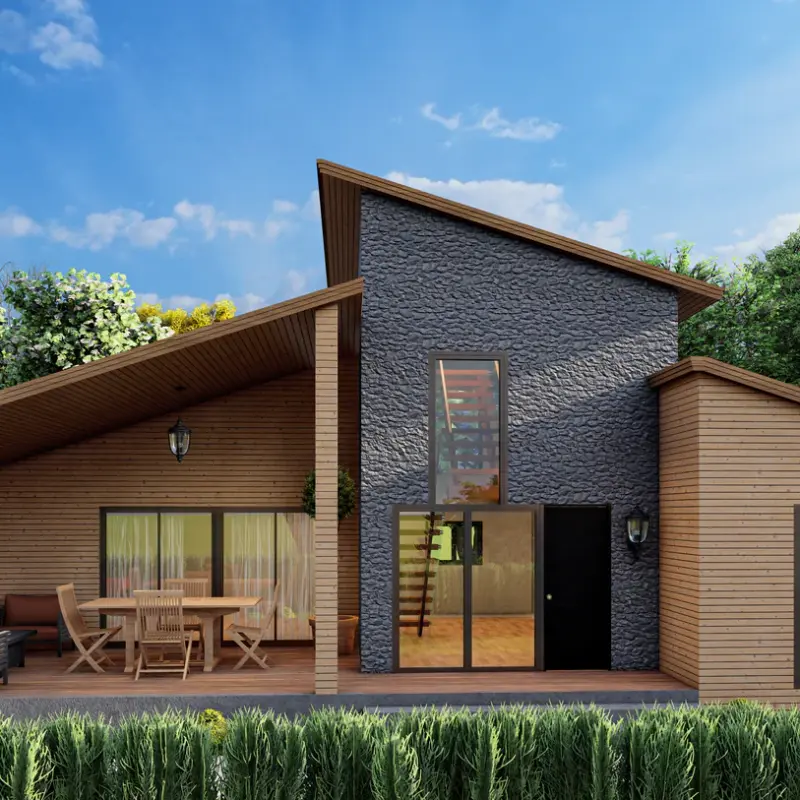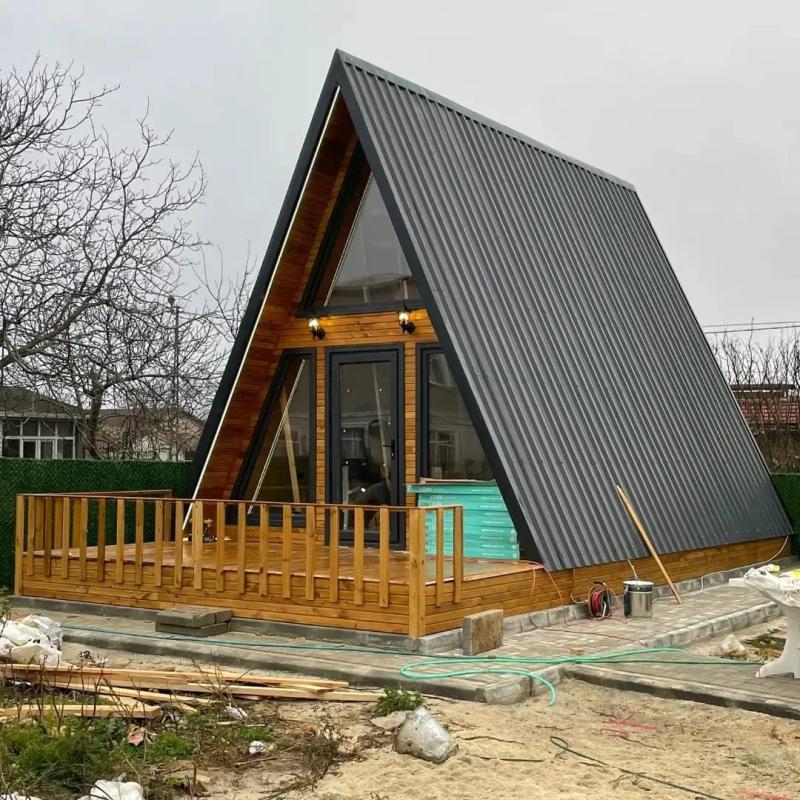A-frame houses have long been a popular choice for homeowners seeking a unique and functional living space. Their distinctive triangular rooflines and efficient use of space have made them iconic structures, blending seamlessly into natural landscapes. However, as with any architectural style, the design of A-frame houses has evolved over time. Today, we see two main styles emerging: classic and modern A-frame house plans. In this article, we will explore the key differences between these two architectural styles and how they each offer unique advantages for homeowners.
Classic A-Frame House Plans: Timeless Simplicity
A Design Rooted in Tradition
Classic A-frame houses emerged in the mid-20th century and quickly gained popularity in the United States, particularly in mountain and lakeside regions. The defining feature of a classic A-frame is its steeply pitched roof that forms an "A" shape. This roof design not only adds to the aesthetic appeal but also makes the structure highly functional. The steep angle helps snow and rain easily slide off, preventing damage to the roof and reducing maintenance needs.
Compact and Cozy Living
Classic A-frame houses are often compact in size, typically ranging from 500 to 1,500 square feet. This makes them ideal for small families, vacation homes, or those looking for a minimalist lifestyle. Despite their small footprint, classic A-frame homes often include spacious open living areas, allowing for a sense of openness and connection with the surrounding environment.
Efficient Use of Space
The layout of classic A-frame houses usually features an open floor plan with a single large room for living and dining. The kitchen and bathroom are often compact but highly functional, allowing homeowners to make the most of the available space. The sloped roof may limit the upper-floor ceiling height in some areas, but it also creates a dramatic and cozy atmosphere that many people love.
Classic A-frame house plans often include large windows, offering sweeping views of the outdoors and inviting natural light into the home. Many classic A-frame homes also incorporate a loft area, which can be used as an additional bedroom, storage space, or a cozy retreat. This makes them perfect for those seeking a peaceful escape from the hustle and bustle of daily life.
Modern A-Frame House Plans: Innovation Meets Style
A Fresh Approach to A-Frame Design
While classic A-frame homes offer a timeless charm, modern A-frame house plans take the traditional design to new heights. These homes often feature updated materials, advanced construction techniques, and a more open, contemporary layout. Modern A-frame houses may have larger footprints and can incorporate features such as floor-to-ceiling windows, expansive porches, and open loft spaces that create an airy and bright atmosphere.
Luxury and Comfort in a Modern Setting
Modern A-frame houses prioritize luxury and comfort without compromising on style. These homes often include cutting-edge amenities such as smart home technology, energy-efficient appliances, and premium materials like glass, steel, and concrete. Unlike their classic counterparts, which often have a more rustic, cabin-like feel, modern A-frame homes can feature sleek, minimalist interiors that appeal to homeowners with a taste for contemporary design.
Seamless Integration with Nature
One of the hallmarks of modern A-frame houses is their ability to seamlessly integrate with the surrounding natural environment. Many modern A-frame designs feature large windows and sliding glass doors that blur the line between indoor and outdoor living. Whether located in the mountains, by the beach, or in a forested area, these homes embrace the outdoors, allowing homeowners to enjoy the beauty of nature from the comfort of their living space.
Customization and Flexibility
Modern A-frame house plans also allow for greater customization and flexibility. Whether you're looking to create a sprawling luxury home or a compact, functional retreat, modern A-frame designs can accommodate a variety of lifestyles. Architects and designers can tailor the layout and materials to suit individual preferences, making it easy to create a home that reflects your unique style and needs.
Classic vs. Modern A-Frame: Which is Right for You?
When deciding between classic and modern A-frame house plans, it's essential to consider your personal preferences, lifestyle, and the environment in which your home will be located. Here are some key factors to help guide your decision:
1. Size and Layout
Classic A-frame homes are typically smaller, making them perfect for those seeking a compact, low-maintenance home. However, modern A-frame homes can be larger and more customizable, providing ample space for families or those who want more room for entertainment and relaxation.
2. Design Aesthetic
Classic A-frame houses often feature rustic, cabin-like designs with natural wood accents and traditional materials. On the other hand, modern A-frame homes lean towards sleek, minimalist aesthetics with clean lines, contemporary finishes, and cutting-edge technology.
3. Functionality
While classic A-frame houses focus on efficiency and compactness, modern A-frame homes offer a higher level of comfort and luxury. Modern homes often incorporate larger windows, open spaces, and luxurious amenities, making them ideal for those who want a contemporary, functional living space.
4. Environmental Integration
Both classic and modern A-frame houses emphasize their connection to the surrounding environment. However, modern A-frame houses often use larger windows and open layouts to enhance the integration with nature. If you prioritize maximizing your outdoor views, a modern A-frame may be the better choice.
Discover the Benefits of A-Frame House Plans
Whether you choose a classic or modern A-frame house, there are numerous benefits to this unique architectural style. Here are some of the key advantages:
- Energy Efficiency: The steep roof and compact design of A-frame houses make them naturally energy-efficient, as they require less energy to heat and cool. The sloped roof also allows for excellent water drainage, preventing damage and reducing maintenance needs.
- Sustainability: Both classic and modern A-frame houses can be designed with sustainable materials and energy-efficient features, making them a great option for environmentally-conscious homeowners.
- Customization: A-frame house plans are highly versatile, allowing for various design modifications to suit your lifestyle and needs. Whether you prefer a traditional or contemporary style, A-frame designs can be customized to reflect your personal taste.
Frequently Asked Questions (FAQs)
Q1: What are the main differences between classic and modern A-frame houses?
A1: The main difference lies in the design aesthetic and level of luxury. Classic A-frame houses typically feature rustic, cabin-like designs with simpler layouts, while modern A-frame houses incorporate contemporary materials, larger spaces, and cutting-edge technology.
Q2: Are A-frame houses energy-efficient?
A2: Yes, A-frame houses are inherently energy-efficient due to their steep roofs, compact design, and efficient use of space. The roof design also allows for better water drainage, reducing the need for maintenance.
Q3: Can I customize an A-frame house?
A3: Yes, A-frame house plans are highly customizable. Whether you choose a classic or modern design, you can work with architects and designers to tailor the layout, materials, and finishes to your preferences.
Q4: Are A-frame houses suitable for small families?
A4: Yes, A-frame houses are ideal for small families, as they typically feature compact floor plans and efficient use of space. Modern A-frame homes can also accommodate larger families with more flexible layouts.
Q5: Where are A-frame houses commonly located?
A5: A-frame houses are often built in natural settings, such as mountains, lakesides, or forests. Their distinctive shape and design make them well-suited to these environments, providing stunning views and a connection to nature.
Q6: What are the benefits of choosing an A-frame house?
A6: The benefits of A-frame houses include energy efficiency, sustainability, unique design, and the ability to seamlessly integrate with nature. They offer both charm and functionality, making them a popular choice for homeowners seeking a distinctive and efficient living space.
 English
English









